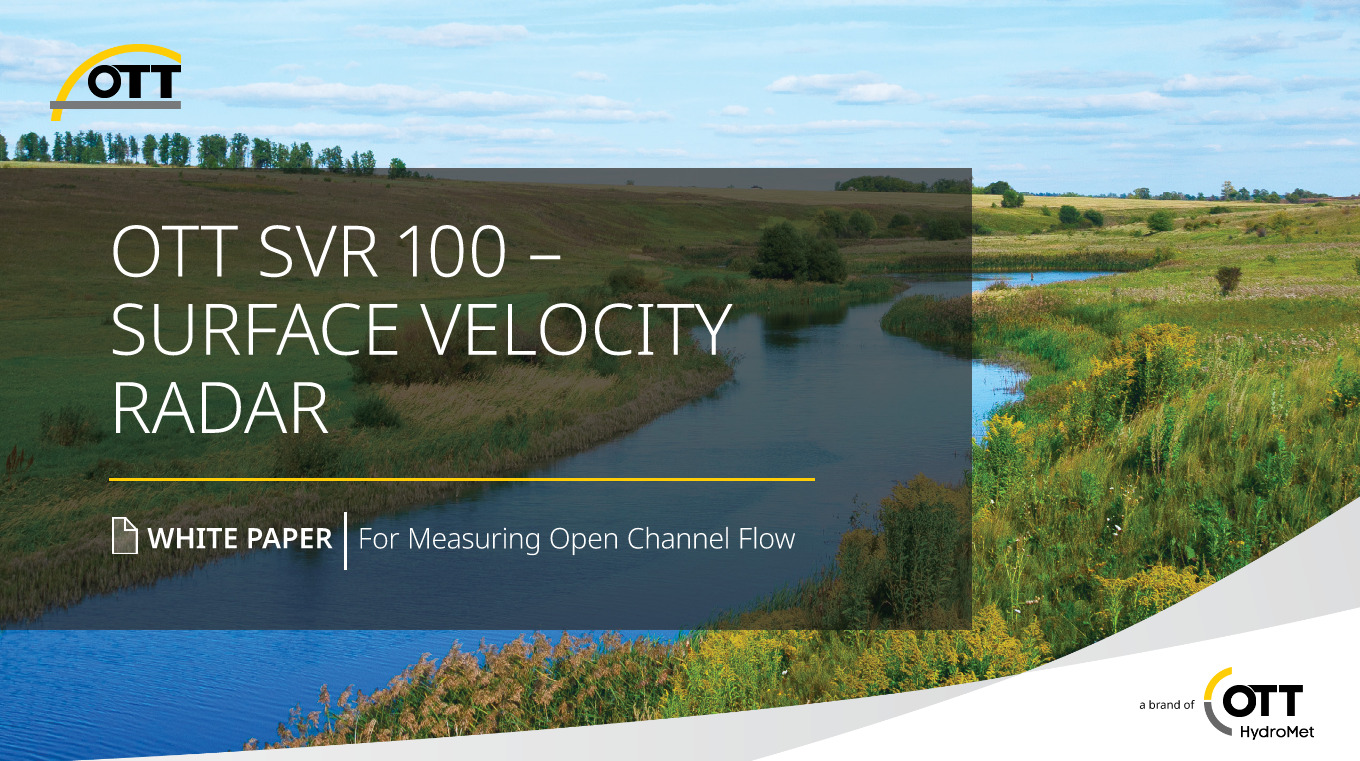The recently updated OTT SVR 100 (Surface Velocity Radar) sensor includes new benefits like stronger compatibility with networks and more trust in data via several data quality indicators.
But our latest whitepaper takes a technical deep dive to showcase the technology that the OTT SVR 100 uses to collect measurements as well as verify accuracy using QA/QC methods. Our experts discuss the following topics in-depth:
- Velocity measuring principle
- Sensor orientation, flow direction, and area of measurement
- Signal-to-noise ratio
- Integrated weather and vibration filters
- Vibration index—measurement quality indicator
Learn more about how the OTT SVR 100 operates using state-of-the-art measuring principles and refined filters to ensure rain, wind, vibrations, and signal interference don’t compromise the accuracy of your data.
View our whitepaper today to see how the SVR 100 can integrate into your network to collect reliable, continuous surface water velocity measurements.



